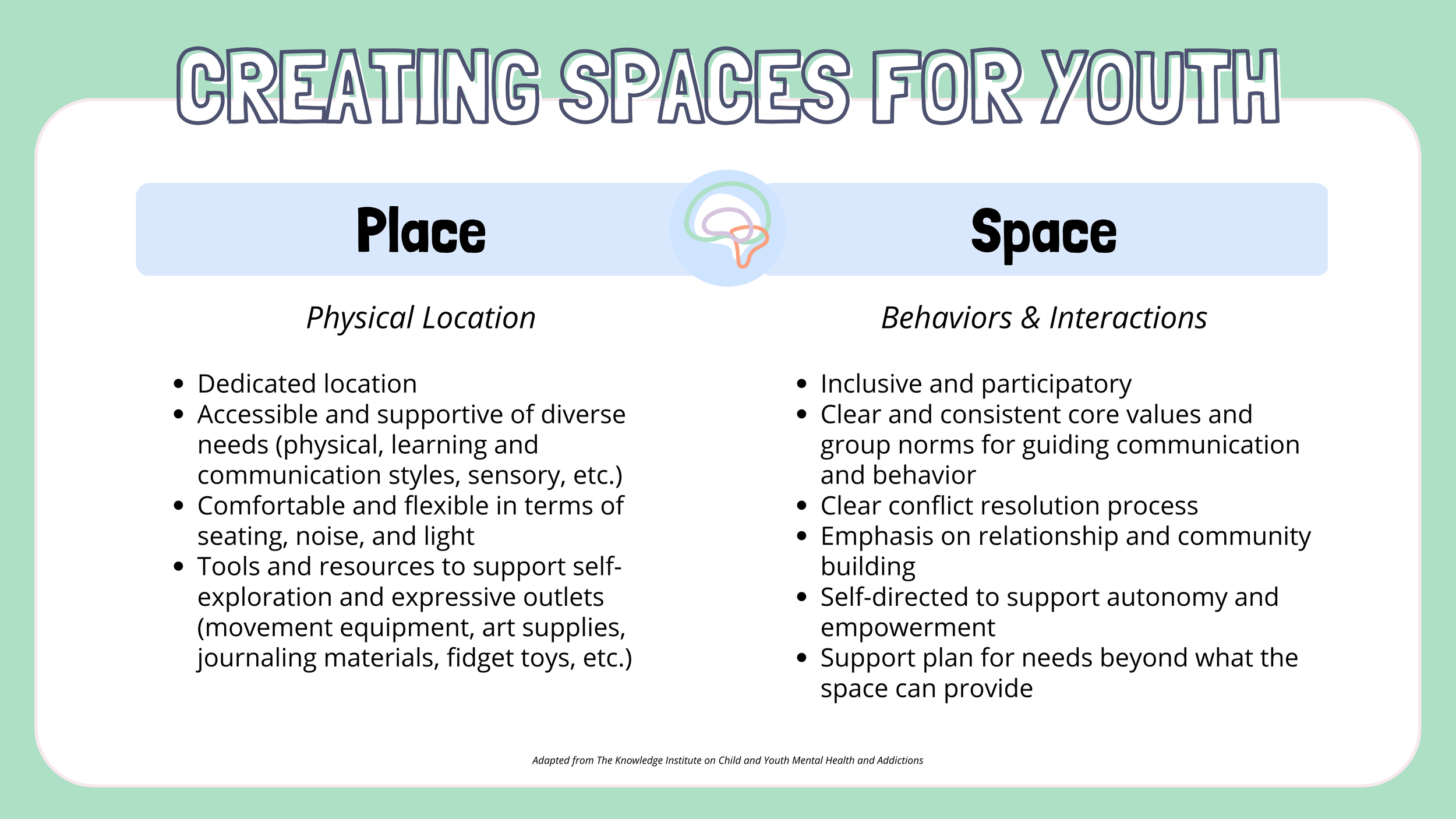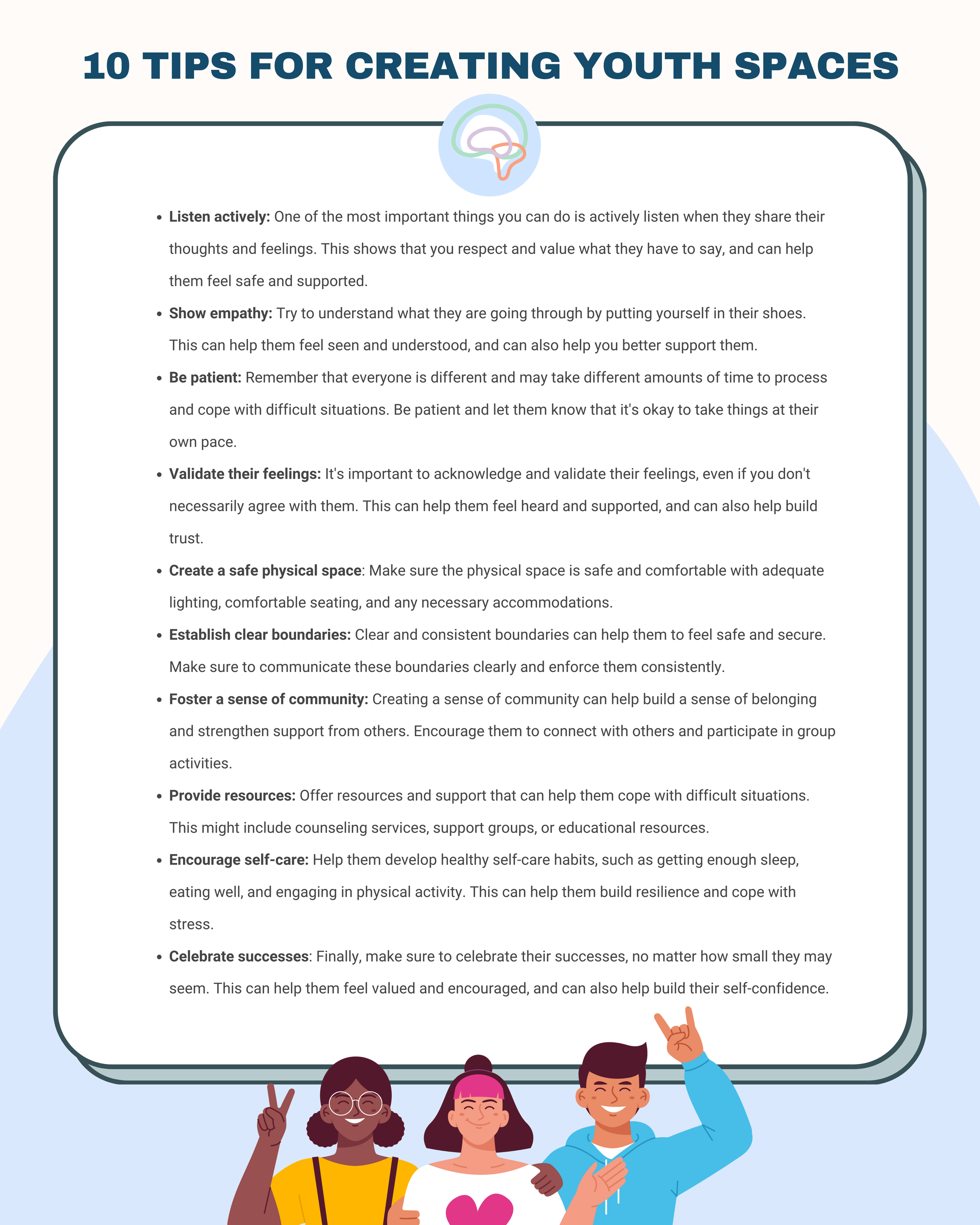Creating Safe Spaces for Youth
Core to developing a strong sense of self are safe and supportive learning environments that foster inclusion and belonging and promote self-discovery and exploration. These spaces are equally important in the many aspects of a child’s life including school, home, and the community.
The Knowledge Institute on Child and Youth Mental Health and Addictions explores safe and supportive learning environments through the elements of place and space. Place refers to the physical location while space refers to behaviors and interactions between the people within it and the policies and practices that support them. These environments are designed to support the application of social-emotional learning skills through self-reflection, collaborative problem-solving, and community building. This means these environments are not free from discomfort, but instead encourage it in order to analyze implicit bias, communicate needs, and resolve conflict in restorative ways.
These environments are designed to be engaging and prioritize physical and emotional safety. In doing so, children are freely able to express themselves authentically and without fear of judgment.
A study conducted in 2021 looked at how young people and adults developed and maintained a sense of safety and belonging in a youth development program. The study found that this sense of safety came from engaging in activities that explored identity, being authentic in their interactions, and having open communication. The participants also described sustaining this environment through formal support channels, mutual support in group settings, and peer support which created a foundation for personal growth through positive risk-taking and self-reflection. It emphasizes the importance of safe and supportive environments in positive youth development.
In 2018, the International Youth Foundation conducted a survey with youth and young adults to understand what safe spaces meant to them. The responses indicated that young people interpret safe spaces in nuanced ways but ultimately can be meeting places where young people can have a dialogue with people who hold different views, and they can be environments that give young people the confidence to openly express those views.
As we see, safe and supportive spaces for youth are foundational to their growth and development and are important throughout their lifespan. Whether a parent, caregiver, educator, or other individual supporting youth - we all play a role in creating and maintaining these spaces. Not sure where to start? Check out these 10 tips and read more in the graphic below:
Listen actively
Show empathy
Be patient
Validate feelings and lived experience
Create a safe physical space
Establish clear boundaries
Foster a sense of community
Provide resources
Encourage self-care
Celebrate success



